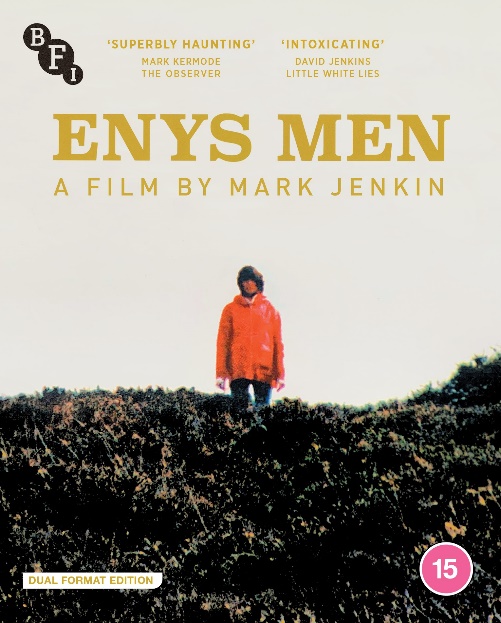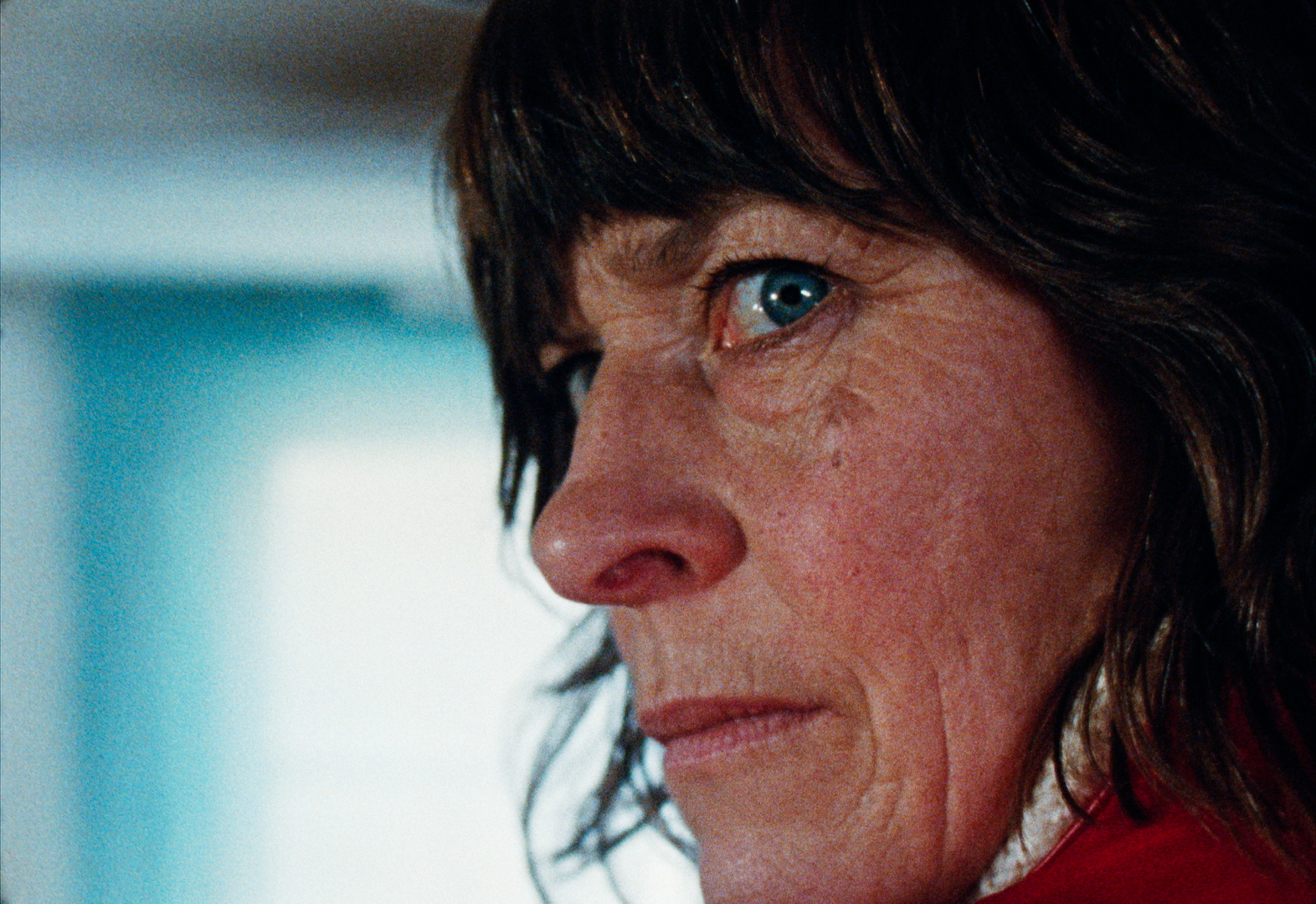In Mark Jenkin’s haunted Cornwall, time warps and bends. He is a child of Nic Roeg’s Seventies masterworks (Walkabout, Don’t Look Now, The Man Who Fell To Earth), whose kaleidoscopic slivering of time expressed an elliptical, sensual mind. Jenkin too has built his own time and space with self-described “seemingly crazy” antique techniques, limiting him to clockwork, 16mm film and post-synch sound.
In this follow-up to his debut, Bait, a ship sunk in 1897's flotsam bobs into 1973, premonitory of a new sinking, remembered on a crackling radio report from now. The otherwise nameless volunteer (Mary Woodvine) meanwhile lives alone on an island in ‘73, recording a rare flower’s daily condition, with the radio and a boatman’s supplies her only mainland contact. At night she reads Teddy Goldsmith and Robert Allen’s A Blueprint for Survival (1972), an early eco-warning placing us in the apocalyptic terrain of TV’s Survivors (1975-77), Doom Watch (1970-72) and the Dr Who serial The Green Death (1973). The eerie ethno-mysticism of Jenkin influences The Shout (1978), The Last Wave (1977) and Walkabout (1971) also lie in Enys Men’s unquiet soil, where the films’ Aboriginal earth-magic becomes Cornish.
 Woodvine looks capably solitary and strong, weathered and at one with the landscape. The volunteer’s isolation and steady concentration sets a deliberate, incremental pace. Then lichen appears on the flowers like poison, spreading to the livid scar on her stomach. As Jenkin explains in an elegant commentary with Mark Kermode which otherwise insists on mystery, she soon slips into a mirror-image of her house, and her mindscape shifts.
Woodvine looks capably solitary and strong, weathered and at one with the landscape. The volunteer’s isolation and steady concentration sets a deliberate, incremental pace. Then lichen appears on the flowers like poison, spreading to the livid scar on her stomach. As Jenkin explains in an elegant commentary with Mark Kermode which otherwise insists on mystery, she soon slips into a mirror-image of her house, and her mindscape shifts.
Bait hit the hot topics of gentrification and second-homes, property imperialism which cost its fisherman protagonist his home and boat, finding an unsuspected, ready audience as Jenkin toured it to cinemas all around these isles, but particularly Cornwall. Enys Men lacks that hook, making its abstraction more forbidding. Its Cornish themes are sunk just as deep, in a tin mine whose miners rise up and lifeboatmen dashed on rocks, violent history also infecting the volunteer’s scar. An ancient, healing hymn sung by a ghost vicar (John Woodvine) makes this widespread, culturally profound loss cohere.
There is no plot, really, but seams of connection between fragments of time, found in a woman’s psyche and a roiling, vivid landscape. Jenkin favours form over content, and the physical material of the film itself breathes and blurs as it’s exposed, capturing the wild land’s deep-hued richness. Enys Men “isn’t quite a horror film”, Jenkin notes. Watching it as one just disappoints, one freaky, shuddering scene aside. It doesn’t grip as Bait did either, but enigmas thread through it, incomplete codes which can’t be fully cracked. It’s an arthouse, avant-garde Cornish myth, a bleeding-red jigsaw falling into place further with each viewing.
Enys Men “isn’t quite a horror film”, Jenkin notes. Watching it as one just disappoints, one freaky, shuddering scene aside. It doesn’t grip as Bait did either, but enigmas thread through it, incomplete codes which can’t be fully cracked. It’s an arthouse, avant-garde Cornish myth, a bleeding-red jigsaw falling into place further with each viewing.
Extras on this BFI dual-format release include a Children’s Film Foundation film, Haunters of the Deep (1984), sharing West Cornwall locations and a haunted tin mine with Enys Men, and The Duchy of Cornwall (1938), a travel short evoking the county’s Mediterranean forebears, storm-lashed iron coast, wrestling rituals, tin mines and tourists. The modest, personable Jenkin provides audio diaries as lockdown postpones Enys Men and a third film is written, considers sound with Peter Strickland and is interviewed with Woodvine.















Add comment